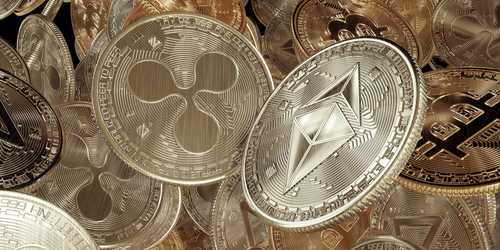
Ethereum and Ripple are two of the biggest names in the crypto industry. Ethereum is known for supporting web3, while Ripple is known for payments.
They are both among the first cryptocurrency projects to launch, but Ripple is even older as it was launched in 2012 while Ethereum launched in 2015. The two are both top altcoins, but they are very different from each other.
In this guide, we will describe each project with its strengths and weaknesses. We will also compare the two so that you can see the difference between them and decide which one to use or even buy as an investment.
What Is Ethereum (ETH)?
Ethereum is the second largest cryptocurrency project by market capitalization after Bitcoin. The project was launched as a platform for developing smart contracts which can be used to build decentralized applications (dApps).
It was from Ethereum that web3 first found expression, and is now growing to become a prominent ecosystem supported by other projects. The network first launched as a proof-of-work (PoW) network but recently changed to a proof-of-stake (PoS) network.
The change to PoS has not affected Ethereum’s dominance at all, as it maintains its reputation as the top platform for smart contracts and decentralized applications. However, it also retains the issues such as low scalability, slow transactions, and high transaction costs which necessitated migration to PoS.
Ethereum therefore faces fierce competition from newer networks that have corrected these issues and offer more efficient and cost-effective platforms for smart contracts and dApps, as well as for the entire web3 ecosystem.
The native token for the project is ETH, which is used to power the project and is used to pay for transaction fees. It is also used for staking by validators to secure the network, since Ethereum is now a PoS network.
ETH holders also have a right to vote on future developments on Ethereum, thus participating directly in the governance of the network. ETH also serves as an investment asset that investors have bought for years, many of which are in profit.
There are 120 million ETH in circulation and that is all the ETH that will ever be available. They are premined, that is they don’t need to be mined, unlike PoW cryptocurrencies.
What Is Ripple (XRP)?
Ripple is a company rather than a cryptocurrency network. However, it has come to be accepted as the name of a cryptocurrency and that XRP is its token. The company is known for facilitating payments for financial companies globally.
It makes international cross-border payments as easy as it gets. Using XRP as the liquidity token, Ripple is able to settle transactions worth billions of dollars within seconds and at a very low cost compared to the traditional means of cross-border settlement.
Unlike Ethereum which uses the popular PoS consensus, XRP Ledger, the blockchain that Ripple uses has its own consensus mechanism called the Ripple Protocol Consensus Algorithm (RPCA).
The customized consensus algorithm is behind Ripple’s fast transactions, which makes it ideal for quick international settlements at the lowest possible cost. XRP transactions typically cost a tiny fraction of a cent.
XRP has a total supply of 100 billion tokens and a circulating supply of over 55 billion tokens. Although it is a premined token, Ripple releases it in bits as the need arises, and is the largest holder of the token.
Like Ethereum, it is also an investment token and there are many investors known as XRP army who believe the price could go as high as $589 in the future.
Which Is Better?
Choosing between Ethereum and XRP depends on what you wish to use the network or token for. If you’re looking for a network to transfer funds, Ripple is perfect.
However if you’re looking for an asset you can buy as an investment, ETH is a much better option because of its much smaller supply and multiple use cases.
Explore the advantages of trading with smart Automator offered by trading bots like AI Definity and make yourself comfortable while trading.


